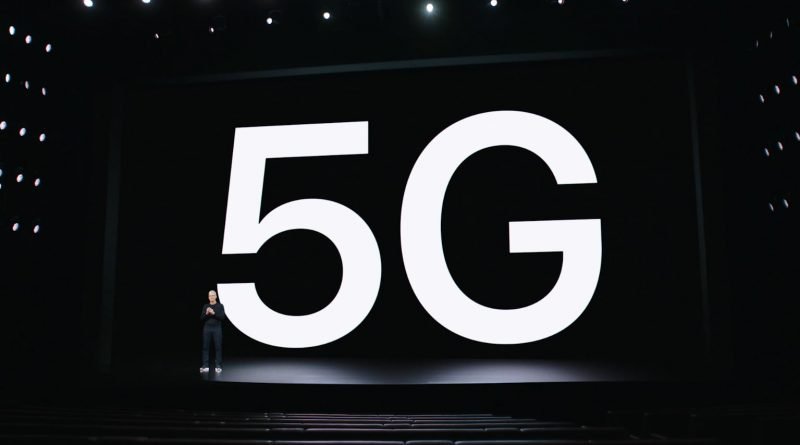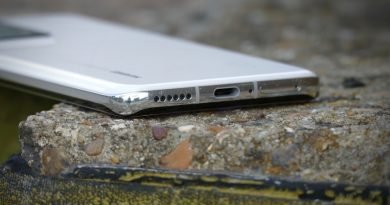As we approach 2022, 5G is Still a Waste of Time and Money
[ad_1]
In September 2019, I signed up for a 5G contract on a brand new phone. It was an exciting day as the phone was the original Samsung Galaxy Fold, and I was about to start life with it connected to what was billed as the latest and fastest cellular connection available.
More than two years later, I now know one of these two technologies would reveal itself to be exciting, enjoyable, and beneficial, while the other would turn out to be a massive waste of time and money.
Despite the Galaxy Fold’s shortcomings, I quickly fell for it, but for all its hype, 5G has barely made any impact on my life at all, and having it enabled on my phone in December 2021 is as pointless as it was more than two years ago.
Pointless?
Before going further, I’ll point out that my experience almost certainly won’t precisely mirror your own. You may have better coverage in your area, and you may have traveled around more, for example. But I also expect it’ll still be difficult to actually name a specific benefit that exclusively came from 5G during this time, regardless of whether the 5G symbol has been glowing brightly on your phone.

I remember the first time the 5G symbol showed up on my Galaxy Fold. It has stayed in my mind because not only did my first taste of 5G not come when I was connected to the network I paid for monthly, but I wasn’t even in the same country. I had just gotten off a flight to Japan and was standing in Haneda airport in Tokyo, using a Japanese SIM I’d purchased for use during my stay. I assume I had stumbled on a test site as 5G wasn’t prevalent in Tokyo at the time, and I never received a 5G signal again after I left the airport.
The fact I had to travel thousands of miles before 5G eventually showed up on my Galaxy Fold set the tone for my continued use. I knew when I entered into the contract that my local area didn’t have 5G, but as I lived a few miles from the U.K.’s second busiest airport, I thought there was a good chance coverage would be slightly higher on the list for my network operator than somewhere in the countryside.
Today, more than two years later, there’s still no 5G coverage there. A town about 20 minutes away has a 5G signal, which I used for a recent test. If I travel into London, which is about 90 minutes away, then 5G shows up more regularly, but it’s certainly not all the time. It’s also shockingly inconsistent, as I discovered when I performed a 5G phone test in another town. Despite a 5G logo showing on all the phones at the time, I was informed in a conversation with a chip maker later on that the phone may not have actually been using a 5G connection at all.
Do I have hope 5G will come to my phone soon? I moved home late last year, and according to my carrier’s coverage map, my closest 5G location is a city about 30 minutes away by car. Right now, as I write this, I have one bar of 4G signal on my Galaxy Z Fold 3 at home, so I’m not expecting 5G to arrive in the near future if this is the best it can do with 4G, a technology that has been around since 2012. Not that it matters, as I’ll now explain.
The pandemic and 5G
Barely six months into my shiny, data-laden 5G contract, the coronavirus pandemic happened. I’m prepared to give 5G a break for it not having much impact on my life during 2020, but my willingness to give 5G the benefit of the doubt only goes so far. For example, our enforced time at home seemed like a great opportunity for networks and companies to show what 5G could do for services like virtual reality and videoconferencing, but alas, all we got was silence.
I did go out of my way to seek out a signal on more than one occasion and have visited more places in 2021 where 5G is easier to find. Each and every time, outside of exclaiming surprise that I’m actually getting 5G on my phone (yes, it’s still rare enough that it’s an occasion), I couldn’t list one benefit from it being there, or one service, app, or experience that I could try out to really make use of it at all.

There is, quite simply, nothing to do with 5G. In 2019, I would have added that it’s early days and benefits will surely start to arrive in the future. After all, that’s what we were being sold. It’s very nearly 2022, and I can’t recommend one thing to do with 5G on your phone that will even competently demonstrate how it’s markedly superior to top-level 4G, let alone something so cool that it will blow your mind.
You could run a speed test and bask in the knowledge that the numbers on the screen will be a bit higher than the ones that would show on a 4G phone’s screen. You could download an app, a podcast, or a show from Netflix faster than with 4G, but it’s never really that much faster in my experience. I also see some hideous lag using 5G, as the modem, phone, and network all dither around sorting out the signal before a download kicks in — which negates the supposed speed benefit over just downloading with 4G.
There is, quite simply, nothing to do with 5G.
In 2021, 5G lets you scrub through a YouTube video with very little lag, webpages appear practically instantaneously, and yes, files do download quickly most of the time. That’s great, except I saw all this when I first tested 5G in the U.K. and in Monaco, and that was in summer 2019. Expecting something more than this now isn’t a big ask.
Am I expecting too much?
I’ve paid for 5G for two years, so I don’t think it’s asking too much for it to appear on my phone once in a while, or to have something specific to try out when it does. After all, I’ve been hearing about how amazing 5G is (will be?) for even longer than that. Samsung called 2018 the “Year of 5G” at Mobile World Congress and gave attendees of the industry event a “glimpse at how user-centric 5G networks will soon transform our homes, cars, cities and more.”

It said 5G would help us move around in autonomous cars while watching ultra-high-definition movies inside, let us play streaming games at home with one-millisecond latency, and enable us to live in smart cities where 5G nodes were fitted inside street lamps. “A large portion of the 5G technologies that will enable the services being introduced at this year’s MWC are already at the commercialization stage,” Samsung excitedly wrote at the time, making it sound like these innovations were right around the corner.
Samsung concedes some of these advancements required the wide adoption of Fixed Wireless Access (FWA) networks, and didn’t actually give a time frame for its predictions. But here we are, coming up to three years after the presentation, and FWA is still very much a work in progress, with the benefits still discussed only as possibilities for the future. And Ookla’s mean latency speed for mobile networks in the U.S. in 2021 is 39 milliseconds. Still some way to go, then.
In the same year, the GSMA, a mobile industry trade body, put together a paper on the “socio-economic benefits of 5G services,” in which it concentrated on mmWave 5G signals. It predicted 2024 would be “the year when 5G is expected to begin displaying a measurable impact on growth.” That’s just two years away now, but Qualcomm — the loudest voice in the mmWave space — is still talking about mmWave in terms of “typical use cases” and not real situations, and listing benefits that sound like science fiction. For example, have you used 5G-driven augmented reality to see real-time stats and player information at a sports event recently? No, me neither.
I’m sure it will all happen one day, but Opensignal’s mid-2021 5G performance report showed that even for those people who do have access to a mmWave 5G signal, they’d be connected to it less than 1% of the time, and that was across AT&T, T-Mobile, and Verizon. It seems you could change the published date on both Samsung and the GSMA’s reports from 2018 to 2021 without fear of them reading like old news.
Whether you care or not, it’s here
I cannot name one time I have been glad to have 5G on my phone. If I had stayed with a 4G contract in 2019, the following two years would have played out in exactly the same way. Even if I could get a 5G signal on a regular basis, none of the transformational tech it’ll hopefully one day deliver is available for me to use or even test out. Simply put, 5G has been a complete waste of my time and money, and any advantage to having it over just a really good 4G signal is almost nonexistent.
Today, almost all smartphones that cost more than $250 have a 5G modem inside, and practically all phone contracts come with 5G data, too. The days of paying a premium for 5G do seem to have passed as the technology has become mainstream. What a very good thing this is because, while we may have access to 5G in 2021, we are still waiting for a reason for it to exist.
Editors’ Recommendations
[ad_2]
Source link




